
TARGET 100616
Our Eyes on the Sky
Were Actually on the Ground
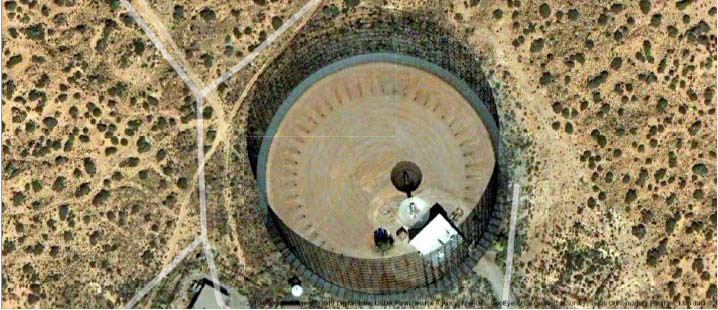
RAM Radar Antenna, WSMR
(32° 30 42.93 , 106° 10 29.64)
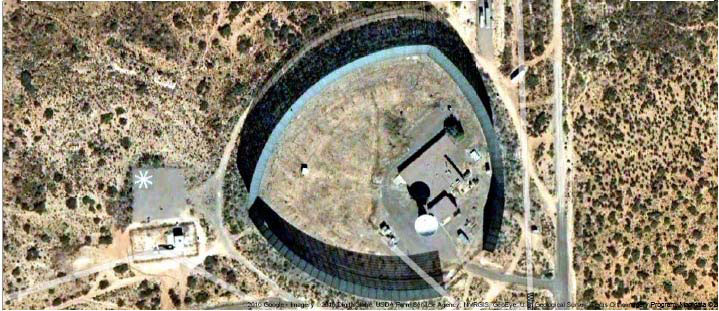
AMRAD Radar Antenna, WSMR
(32° 31 27.08 , 106° 8 33.19)Very few people in the U.S. know that we used to shoot intercontinental ballistic missiles (ICBMs) at our own country. "What?" you say. "That's crazy! Why would we do that?"
Well, if you build a huge and very expensive system for detecting incoming ICBMs, then it's a good idea to make sure it works before someone else shoots one at us. So, we had to shoot some at ourselves. And, to make sure that we could detect and intercept an incoming ICBM, we had the two huge radar arrays shown above. Those two systems are different mainly in their frequencies, and worked in tendem. So, although there are two different radars, they are located in very near proximity, so they are given as a single target.
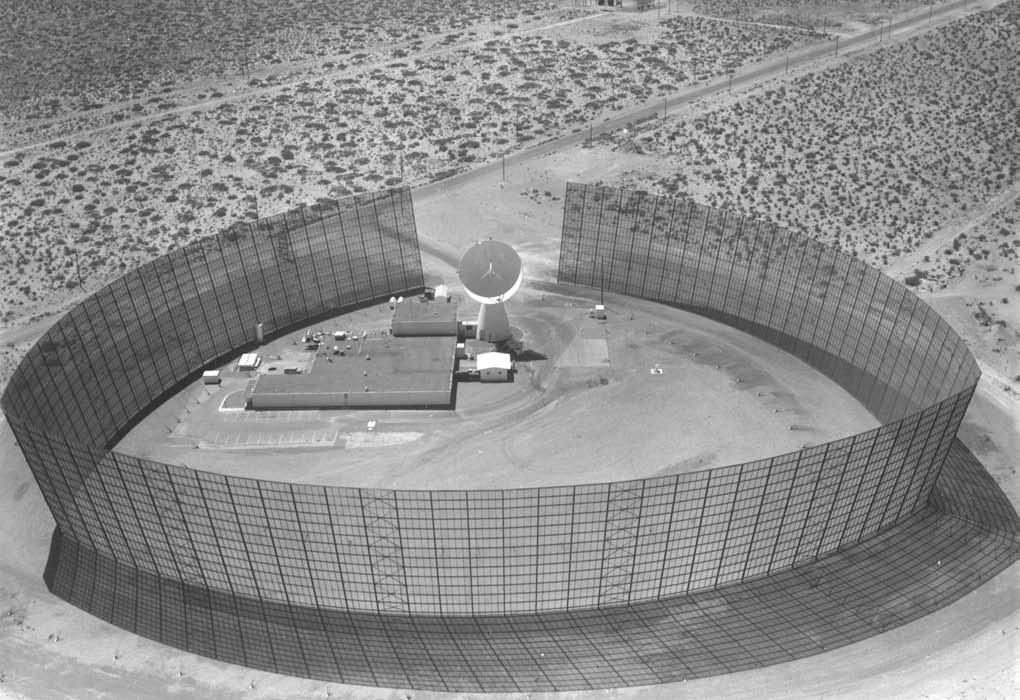
The fence does not actually lean. That is a photo artifact. You can see the size of the antenna by comparing it to the buildings inside the fence.
If you go onto White Sands Missile Range, you can drive out Nike Avenue to the eastern edge of the range and turn left just before the Orogrande gate. Drive approximately 7.5 miles and turn left for another 2 miles. You come to a complex with a large dish type radar antenna inside a very high fence. There is also a building outside the fence with a large dish type radar antenna beside it (see photo below). If there is anyone around, it would be unusual. Well, thats not the way it was back when the Cold War was in full effect and everyonw was worried about IBCM attacks.
The radar inside the fence was called RAM and the one outside was called RAMPART. The buildings, fence, and antennas are still there today. All radar equipment has been removed from the buildings. These two radars were part of the Air Force Advanced Ballistic Reentry Systems (ABRES) program.
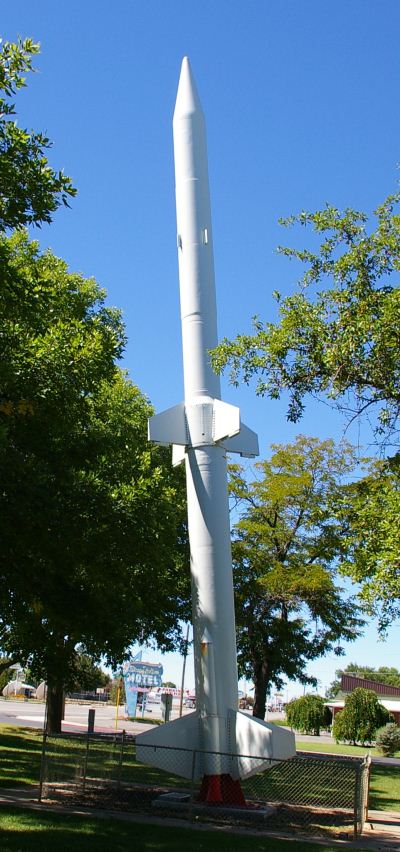
The Athena Missile
Almost no one knew about the detector array, out in the desert, but people did know about the Athena missile, which was the missile we fired at ourselves. While it wasn't a true ICBM, it was (see photo at right). It was launched from a launch complex at Green River, Utah. It was typically flown with four solid-propellant rocket stages. With two additional solid-propellant boosters strapped to the first stage that ignited simultaneously with it. The first two stages lifted the rocket to an altitude between 125 and 185 miles, well out of the atmosphere. After about a 4 minute flight, covering about 470 miles, it could realistically simulate a 25 minute ICBM mission across 5,000 miles. Once the two first stages burned out, the missile turned nose downward and the remaining two stages accelerated the re-entry vehicle towards the denser atmosphere to a speed of up to 22,000 feet per second. It would then be pointed towards the southern part of White Sands Missile Range where, in spite of the fact that it did not have a warhead, it would impact in a most awesome sight to see.
The USAF launched more than 140 Athenas between 1964 and March 1977, testing reentry technology for the Titan, Minuteman, Polaris, and Poseidon missiles. The fiery nighttime reentry of the Athena provided a spectacular display as it streaked toward impact with the desert floor a little northwest of the RAM and RAMPART Radars.
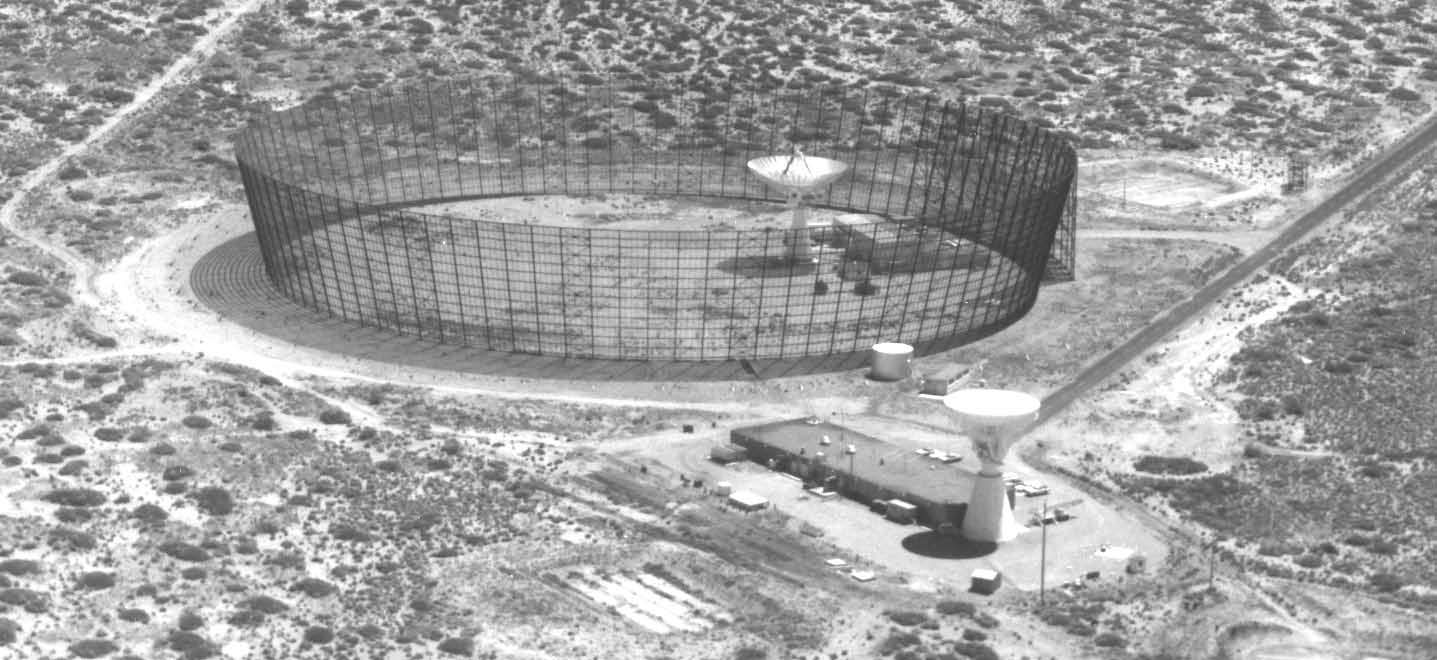
The AMRAD half of the detection facility
The radar antenna was powerful enough to cook people even miles away. In fact, the fence around the radar is not an antenna, but is a grounded wire wall designed to block the radar signal, since the beam could affect or even kill people on Hwy 70, some 12 miles away.
Since the radar buildings had large Radio Frequency (RF) shielded rooms to protect the people who worked there, they were very useful to other agencies such as the Survivability/Lethality Analysis Directorate (SLAD) and the Nuclear Effects Facilities of the Material Test Directorate. Those agencies have intermittently used these facilities for several years, since the closure of the ICBM intercept trials, in the early 1970s. As you can probably tell by the names of the agencies, the area is still sometimes subjected to lethal doses of different types of radiation.
Today, the radar and computer equipment has been removed from the site, but the fence, the antenna and the buildings still stand in the lonely desert, a silent reminder of a time in American history when fear and suspiction were a part of our daily lives.FEEDBACK MAP
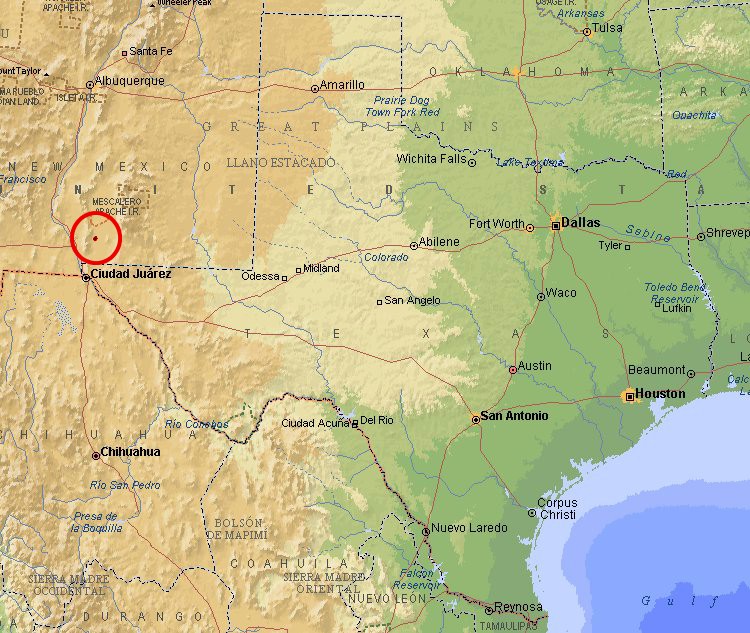
To learn more about RAM and AMRAD intercept system, take a look at the following web sites:
AMRAD.org Whole information about LF & equipment
DTIC OnLine: Information for the Defense Community Report: "EFFECT OF ANTENNA OPERATION ON STRUCTURE AND FOUNDATION BEHAVIOR"
Janes Intelligence reports (Detailed description and statistice of the system)
White Sands Missile Range publication, "Hands Across History" A historical report on the system
Harvard.edu A historical report on the system
Many thanks to Gary and Martha Kilpatrick for this target